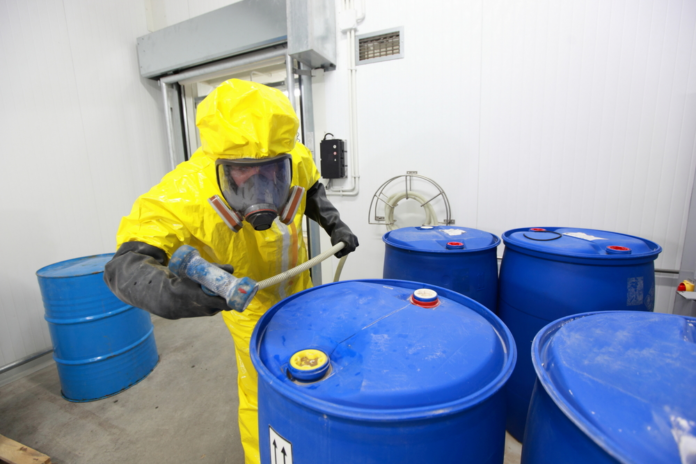In today’s world, concerns about environmental safety and the impact of toxic substances on our health have led to an increase in toxic tort litigation. These lawsuits are complex legal battles that seek to hold companies and individuals accountable for exposing others to hazardous materials.
In this comprehensive guide, we will delve into the world of toxic tort litigation, shedding light on its intricacies, the legal processes involved, and the rights of those affected.

Defining Toxic Torts
Toxic torts encompass a wide array of personal injury lawsuits that emerge when individuals or communities are exposed to dangerous chemicals, pollutants, or toxins, resulting in harm or illness. These cases are characterized by their complexity, often involving prolonged exposure to hazardous substances, with health repercussions that may not surface until years or even decades later.
The crux of toxic tort litigation lies in determining the link between exposure and injury, making these cases particularly intricate and demanding a thorough understanding of the legal intricacies involved.
In accordance with attorney Shaun Blake, toxic torts can arise from a myriad of situations, ranging from industrial pollution and occupational hazards to pharmaceuticals with harmful side effects and consumer products containing toxic materials. The key defining factor in these cases is the harm caused by toxic exposure, which may manifest as various health issues, including respiratory problems, cancers, neurological disorders, and more.
Types of Toxic Torts
Toxic tort cases come in various forms, each presenting its unique challenges and legal nuances. Some common types of toxic tort claims include:
- Environmental Toxins: These cases involve the contamination of air, water, or soil due to industrial activities, leading to health problems in nearby residents. For example, a chemical plant’s improper disposal of toxic waste polluting a local water supply.
- Occupational Exposure: Workers who are exposed to toxic substances in their workplace may develop illnesses like mesothelioma from asbestos exposure or chemical-related diseases. This category often involves employers failing to provide adequate safety measures or protective gear.
- Pharmaceutical Litigation: Claims against pharmaceutical companies for harmful side effects of drugs, such as birth defects or organ damage, fall under this category. It can result from insufficient testing, lack of warnings, or misrepresentation of a drug’s risks.
- Product Liability: When a consumer product, like a defective household item, causes harm due to toxic materials or chemicals, product liability claims may arise. This category involves holding manufacturers or distributors responsible for selling unsafe products.
Understanding the specific type of toxic tort is crucial, as it determines the legal principles, evidence requirements, and potential defendants involved. The intricacies of each type demand tailored legal approaches.

Establishing Liability
Proving liability in toxic tort cases can be a formidable challenge. Plaintiffs must demonstrate that their injuries or illnesses directly resulted from exposure to toxic substances. This often involves a complex process of collecting scientific and medical evidence, as well as expert testimony.
Central to establishing liability is the concept of causation – proving that the exposure to the toxic substance was the direct cause of the harm suffered. This can be especially challenging, given the potential latency period between exposure and the manifestation of health issues. Moreover, toxic tort cases frequently involve intricate scientific and medical aspects that necessitate expert witnesses to testify on behalf of the plaintiff.
The burden of proof in toxic tort cases is on the plaintiff, who must provide compelling evidence linking the toxic exposure to the injuries or illnesses claimed. This rigorous evidentiary requirement underscores the intricate nature of toxic tort litigation, where a comprehensive understanding of both legal principles and scientific intricacies is paramount.
The Role of Class Action Lawsuits
In some toxic tort cases, a large number of people may be affected by the same toxic exposure. In such instances, the option of class action lawsuits may emerge. These collective legal actions streamline the process by consolidating multiple plaintiffs into a single case against a common defendant. Class actions can expedite proceedings and enable affected parties to seek compensation collectively, presenting a practical approach when many individuals share a similar grievance.
Class action lawsuits can be particularly advantageous when addressing toxic exposures that impact entire communities or when the harm is widespread. They provide a unified front for plaintiffs, often leading to more efficient resolution and the potential for higher damages awarded due to the cumulative impact of the harm.
However, it’s important to note that class action lawsuits in toxic torts also have their challenges. They require certification by a court, which involves demonstrating that common issues predominate over individual ones. Additionally, plaintiffs in class actions may have limited control over the litigation process compared to individual lawsuits.

Compensation and Remedies
Successful toxic tort claims may lead to various forms of compensation and remedies for the plaintiffs. These can include coverage of medical expenses, reimbursement for lost wages, compensation for pain and suffering, and, in cases of extreme negligence, punitive damages designed to deter harmful conduct.
The specific remedies available depend on the severity and nature of the injuries or illnesses resulting from toxic exposure. For instance, a plaintiff suffering from a debilitating illness with significant medical costs may receive substantial compensation, while someone with less severe health issues may receive a proportionate award. Punitive damages are typically reserved for cases where defendants’ actions demonstrate gross negligence or intentional harm.
The intricacies of calculating damages in toxic tort cases are multifaceted. They often involve extensive documentation of medical expenses, expert testimony regarding future care needs and loss of earning capacity, and a comprehensive assessment of the pain and suffering endured by the plaintiff. These aspects highlight the need for tailored legal strategies to ensure that plaintiffs receive just compensation for the harm inflicted by toxic exposures.
The Importance of Legal Representation
Given the complexity of toxic tort litigation, individuals and communities impacted by toxic exposures often turn to experienced attorneys who specialize in this field. These attorneys possess the necessary expertise to navigate the intricate legal landscape, coupled with an understanding of environmental regulations and scientific principles.
Legal representation by seasoned toxic tort attorneys plays a pivotal role in securing justice and environmental safety for affected individuals and communities alike. These attorneys serve as advocates for their clients, guiding them through the complex legal processes, ensuring the collection of compelling evidence, and advocating for their rights in negotiations and, if necessary, in court.
Moreover, toxic tort attorneys often collaborate with a network of experts, including medical professionals, environmental scientists, and toxicologists, to build strong cases. This interdisciplinary approach enhances the plaintiff’s chances of success in establishing liability and obtaining fair compensation.

Conclusion
Toxic tort litigation is crucial for holding accountable those responsible for exposing others to harmful substances. These complex cases involve scientific evidence and legal intricacies. Understanding them is vital for seeking justice and compensation. Experienced attorneys play a vital role, ensuring victims receive deserved compensation and promoting environmental safety.









